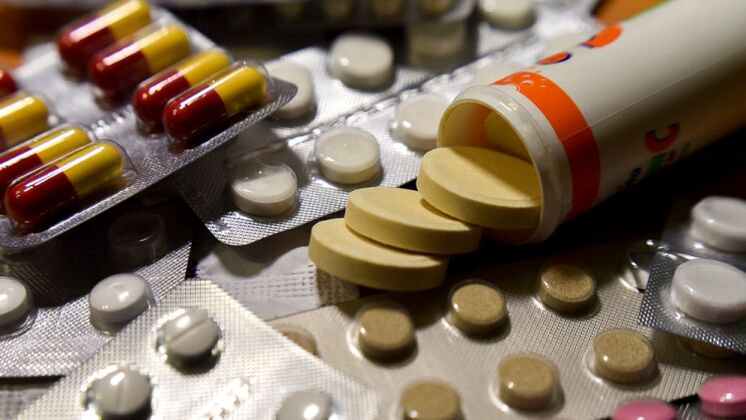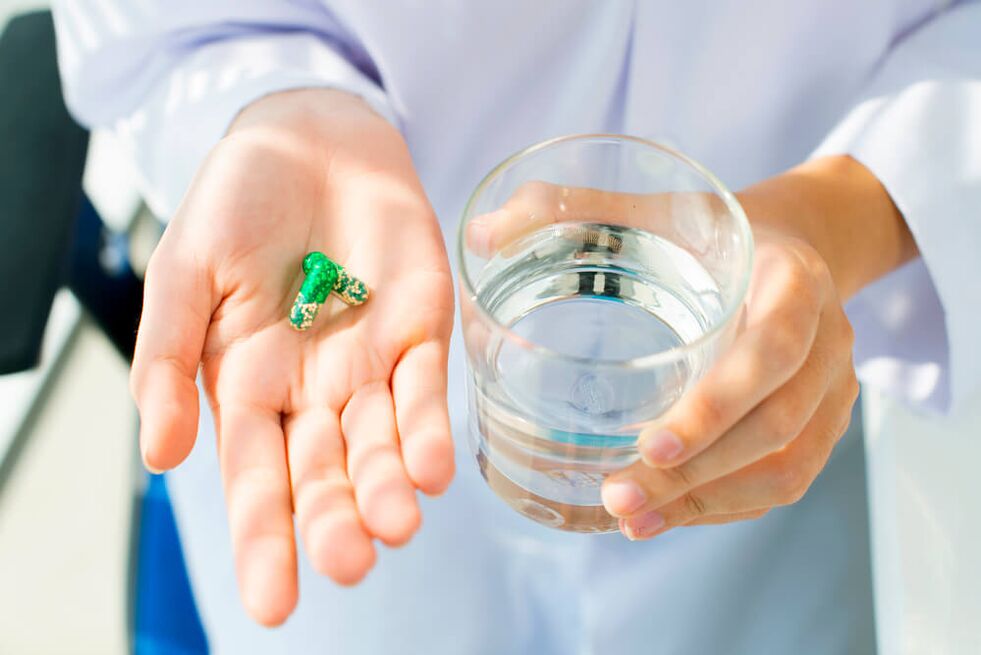Prostatitis is a relatively common male disease.
It can be contagious and non -contagious, with the first form being divided into bacterial and non -bacterial.
Treatment of prostatitis with antibiotics is performed with infectious bacterial lesions of the glands, although the symptoms are not so obvious.
Sometimes they are prescribed as test therapy for non-bacterial forms.

Antimicrobial agents actively influence the pathogenic microflora, destroy inflammatory pathogens, and broad -spectrum antibiotics are also a prevention of complications that can affect the genitourinary system.
Classification of antibiotics for prostatitis
In acute or chronic inflammation, doctors choose drugs from one or more groups of antibiotics to which the microbes are sensitive. This is determined by the results of the analysis.
All antibacterial agents can be divided into the following groups:
- penicillin;
- tetracycline;
- aminoglycoside;
- cefolosporin;
- fluoroquinolone;
- macrolide.

Penicillin group
Drugs in which the main ingredient is penicillin are antibacterial agents with a broad spectrum of action.
In this case, the material can be of natural and synthetic origin. The advantages of this drug are its affordable price and the ability to use tablets (or suspensions) at home.
Among the extensive list of penicillin antibiotics, the most common is penicillin of the same name, which is most often prescribed for chronic inflammation.
Tetracycline group
Tetracycline as an antibiotic for prostatitis can be prescribed for external use in the form of ointments or in tablet form for oral administration.
This substance effectively kills streptococci, staphylococci, salmonella, chlamydia, shigella and a large group of other microbes, while being rapidly absorbed into prostate tissue.
Recently, tetracycline drugs are used in urology less and less because of a large number of side effects (especially from the gastrointestinal tract).
Among the disadvantages of the drug, one can distinguish the formation of resistance of microorganisms to tetracycline drugs, as well as a number of side effects:
- intestinal colic;
- nausea;
- digestive disorders;
- anemia;
- eosinophilia;
- increased intracranial pressure;
- liver damage;
- allergies.
Aminoglycoside group
This drug has long been used as an antibiotic for prostatitis in men with a variety of effects. However, this drug product is highly toxic.
The most common drug use, which is very effective in combating gram-negative pathogens of bacterial inflammation, which includes Pseudomonas, Proteus, Klebsiella, Salmonella, Enterobacteriaceae.
They are inexpensive and quickly absorbed into the bloodstream - the maximum concentration of plasma is reached one hour after ingestion.
Lack of funds:
- Limited spectrum of action - it is used only as an additional agent to combat certain pathogenic microorganisms in the complex therapy of inflammation of the prostate gland.
- It can cause many side symptoms, including: headache, kidney failure, vomiting, nausea, hearing loss, anemia, leukopenia, drowsiness, oliguria (decreased amount of urine excreted compared to normal), and others.
- The drug is not sold in oral form - it is injected by cutting the gastrointestinal tract through injections and injections.
Group of cephalosporins
This antibacterial agent is also not intended for oral administration, it is given parenterally. They are often prescribed for inpatients.
The funds act on the basis of gram -positive pathogens, a small group of anaerobes and gram -negative bacteria.
Funds are often prescribed to combat complicated prostatitis, which is caused by E. coli, enterobacter, gonococcus, staphylococcus, Proteus, Klebsiella and other pathogens.
These funds are the goal of doctors if the infection cannot be defeated with penicillin, tetracycline and other antibiotics.
Among the additional advantages of the drug are an acceptable cost and a minimum of contraindications (the exception is hypersensitivity to this type of antibiotic).
Like all antibacterial agents, cephalosporins have side effects:
- Headache;
- allergic skin rashes and local reactions at the injection site;
- intestinal and gastric disorders;
- colitis and others.
Fluoroquinol Group
This drug is used in the complex therapy of chronic inflammation of the prostate, because it quickly penetrates into the glandular tissue and has a long -term effect.
It is best to drink them if the disease is caused by mycobacteria, gram-positive and gram-negative microorganisms, chlamydia or mycoplasma.
Among the side effects, in addition to vomiting, nausea and diarrhea specific to antibiotics, there are ICP, tachycardia, fatigue, leukopenia, anemia, and impaired renal function.
Important!Medications should not be combined with certain medications. For example, with adenosergic drugs, the combination lowers blood pressure dramatically. It is also not recommended to take the drug together with non-steroidal anti-inflammatory drugs, as their combination increases the negative effects on the nervous system.
Macrolide groups
They are sometimes used to treat prostatitis caused by chlamydia or mycoplasma. However, with respect to other potential pathogens, its effectiveness has not been confirmed.
Treatment regimen
The type of antibacterial agent to be taken is determined by the doctor after conducting tests to determine the type of pathogen and its sensitivity to the drugs.
Antibiotics are only part of the treatment for acute and chronic infectious prostatitis, which covers the entire list of complementary medications.
Standard therapy systems include:
- Antibacterial drugs - to destroy the source of inflammation.
- Blood circulation stimulant - to exclude blood stasis in the small pelvis.
- Anti -inflammatory drugs - to relieve swelling and pain.
- Immunomodulators - to maintain and activate the body's immune system;
- Sedatives;
- Vitamins and trace elements (zinc, magnesium, selenium, vitamins A, B, C, E);
- Preparation of herbs and teas (elderberry, lingonberry, St. John's wort, comfrey);
- Exercise and prostate massage - to stimulate circulation and reduce congestion.

Acute inflammation
In the acute form, home therapy under physician supervision and inpatient treatment is possible.
In this case, prescribed drugs that act comprehensively and extensively: first they use strong drugs from the list of cephalosporins, and with increasing they switch to fluoroquinols.
It is sometimes advisable to take two types of antibiotics at once for healing as soon as possible.
In acute inflammation, the reaction to the medication manifests itself quickly - the symptoms disappear within a few days.
But even with his condition subsiding, you can not interrupt the course and change the dose prescribed by a urologist. This can lead to the transition of the disease into a chronic form and the formation of bacterial resistance to drugs.
If everything is done correctly, prostatitis is cured 100% without complications.
Chronic process
Compared to the acute form, the treatment of slow inflammation with periodic exacerbations is more complex and prolonged. This is due to changes in the prostate tissue, which is less sensitive to and "stores" antibacterial drugs in their cells.
However, for chronic courses, antibiotics of the following groups are most effective:
- cephalosporins;
- fluoroquinols;
- macrolide.
The duration of therapy is at least a month, but usually this is not enough, so the doctor prescribes several courses at once at regular intervals. It’s important to follow this guide, even for the better: the feeling can be deceptive and will only exacerbate the problem.
In conclusion
When symptoms of prostatitis appear, do not waste time looking for solutions on forums and thematic sites. It is important to see a doctor before the disease becomes severe and complications begin with serious consequences for men’s health.
























